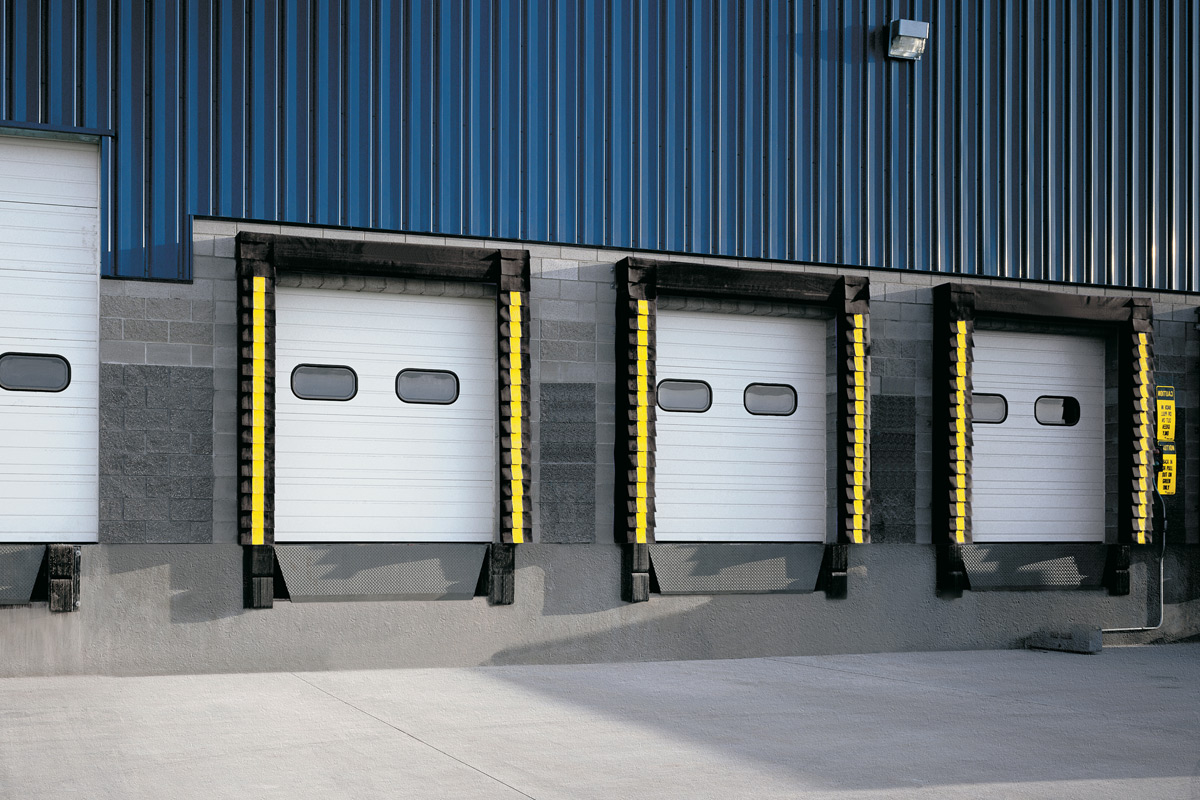Overhead doors are a crucial component of modern architecture, particularly in residential, commercial, and industrial buildings. Often referred to as garage doors, these doors operate by moving upward along tracks, making them ideal for spaces that require maximum clearance. Whether you’re installing a new overhead door or looking to maintain an existing one, understanding the types, benefits, and proper care of overhead doors can help you make informed decisions.
What is an Overhead Door?
An overhead door is a type of door that moves upward and overhead, often along a set of tracks. These doors are commonly found in garages, warehouses, and storage facilities, but they can also be used in other settings like barns and industrial facilities. The primary feature of an overhead door is its ability to open vertically, conserving space and providing easy access without taking up valuable floor space in the building.

Types of Overhead Doors
There are several types of overhead doors available, each designed to suit different needs. Here’s a breakdown of the most common types:
1. Sectional Overhead Doors
Sectional doors are made up of several horizontal panels that slide upward along tracks when opened. These doors are popular in both residential and commercial settings because they are space-efficient and can be insulated for energy efficiency. Sectional doors are often powered by automatic openers, making them convenient for everyday use.
2. Roll-up Overhead Doors
Roll-up overhead doors are similar to sectional doors but are designed to roll up into a compact coil above the opening. They are typically used in commercial and industrial applications where there is a need for high durability and frequent use. These doors are designed to withstand harsh weather and heavy-duty operations, making them ideal for warehouses and other large-scale buildings.
3. Single Panel Overhead Doors
As the name suggests, single panel overhead doors are made from a single piece of material that swings upward when opened. They are commonly used in residential settings, especially in older homes, though they require more clearance space than sectional or roll-up doors. These doors are typically simpler in design but can still be durable and reliable when properly maintained.
4. Tilt-Up Overhead Doors
Tilt-up doors are less common but still offer a unique solution for buildings with specific clearance needs. These doors are made from a single large panel that tilts outward before lifting upwards. Tilt-up doors are often seen in commercial and industrial buildings and can be a cost-effective option for larger spaces that don’t require sectional or roll-up designs.
Benefits of Installing an Overhead Door
Overhead doors offer numerous benefits, making them a popular choice for many property owners. Here are some of the key advantages:
1. Space Efficiency
One of the biggest advantages of overhead doors is their space-saving design. Unlike traditional swing doors that require additional room to open outward, overhead doors move vertically along tracks, freeing up valuable floor space. This makes them perfect for areas with limited space or where you need to maximize parking or storage capacity.
2. Increased Security
An overhead door provides superior security for your property. Many modern overhead doors come with advanced locking mechanisms, heavy-duty materials, and impact-resistant features to prevent unauthorized access. Whether it’s for a residential garage or a commercial warehouse, overhead doors help keep your property secure.
3. Aesthetic Appeal
Overhead doors come in a wide variety of designs, materials, and finishes to match the style of your home or building. From sleek modern designs to more traditional options, you can easily find an overhead door that complements the aesthetic of your property. The ability to customize the appearance of the door ensures that it enhances the overall look and feel of your space.
4. Energy Efficiency
For homes and businesses looking to improve energy efficiency, overhead doors are a great option. Many models are available with insulation, which helps regulate indoor temperatures by preventing the outside elements from entering your building. This can result in lower heating and cooling costs, especially for garages or warehouses that are often exposed to fluctuating temperatures.
5. Durability and Low Maintenance
Overhead doors, especially those made from steel or aluminum, are built to last. These doors are designed to withstand the elements and regular wear and tear, making them a reliable choice for both residential and commercial properties. Additionally, many overhead doors come with durable coatings that resist rust and corrosion, ensuring a long-lasting, low-maintenance door solution.
Choosing the Right Overhead Door for Your Needs
When selecting an overhead door for your property, there are a few factors to consider:
1. Material
Overhead doors are available in a range of materials, including wood, steel, aluminum, and fiberglass. Each material offers different benefits. For instance, steel doors are known for their strength and durability, while wooden doors offer a more traditional look. Consider the climate, aesthetic preferences, and maintenance requirements when choosing the material for your door.
2. Size and Fit
The size of your overhead door should be determined based on the dimensions of your doorway. For commercial properties, larger doors may be necessary to accommodate larger vehicles or machinery. For residential homes, the standard size is typically sufficient, but custom sizes are available for unique spaces.
3. Style and Design
Overhead doors come in a variety of styles, from classic raised panel doors to more contemporary, minimalist designs. Think about how the door will blend with the rest of your property’s design and what kind of impact you want it to make. Some doors offer windows or decorative accents that can further enhance their appearance.
4. Insulation
If you live in an area with extreme temperatures, it may be wise to choose an insulated overhead door. Insulation helps maintain the temperature inside your garage or building and reduces energy consumption. It also contributes to noise reduction, making it a good option for homes near busy roads or commercial buildings.
Maintenance Tips for Overhead Doors
To ensure your overhead door remains in good working condition, regular maintenance is essential. Here are some simple tips to keep your door functioning smoothly:
1. Lubricate Moving Parts
Overhead doors have many moving parts, including springs, rollers, and tracks. Lubricating these components regularly can help prevent wear and tear, ensuring that your door opens and closes smoothly. Be sure to use a high-quality lubricant designed specifically for overhead doors.
2. Inspect for Damage
Periodically inspect your overhead door for signs of damage, such as dents, rust, or wear on the springs. Catching issues early can prevent more extensive and costly repairs down the road.
3. Test the Balance
A well-balanced overhead door operates more efficiently and with less strain on the motor. To test the balance, disconnect the automatic opener and manually lift the door. It should open smoothly and stay in place without assistance. If it feels heavy or doesn’t stay open, it may require adjustments.
4. Check the Weather Stripping
The weather stripping on your overhead door helps keep out drafts, dirt, and moisture. Inspect it regularly for cracks or signs of wear and replace it if necessary to maintain energy efficiency and protect your property.
5. Call a Professional
If you encounter any issues with your overhead door that you can’t resolve on your own, it’s always best to call a professional. Trying to fix complex issues, such as spring replacements or motor problems, can be dangerous and may cause further damage.
Conclusion
An overhead door is an essential feature for many properties, offering numerous benefits, including space efficiency, enhanced security, and aesthetic appeal. Whether you’re choosing an overhead door for a home garage or a commercial building, it’s important to consider factors like material, design, and insulation to meet your specific needs. Regular maintenance is key to ensuring that your door continues to function smoothly and lasts for many years to come. With the right overhead door, you can enhance both the functionality and appearance of your property.

